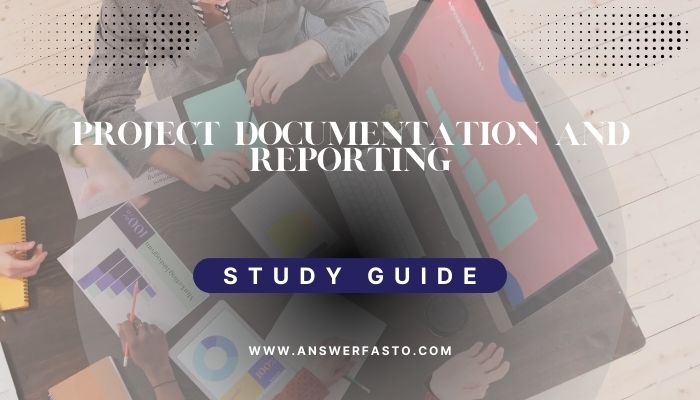Importance of Project Documentation and Reporting Project documentation and Reporting, about project management, are straightforward conduits through which information about project progress, status, updates, and communications with the stakeholders can flow. Below is a brief discussion about their meanings and an example.
1.Communication:
Project Documentation should thus provide a fair and coherent description of what goes down between stakeholders, reflecting the progress of the project, its troubles, risks, and achievements.
Example: For instance, say a change of audience is approved as a result of a marketing campaign; the project manager will then extract that out and communicate it to the creative team, media buyers, and content creators to route their planning along this line best suited to the change.
2. Informed Decision Making:
It is important to maintain updated documentation in projects providing information and proof for decision-making.
Example: With documents available in a software development project, the project manager can decide on accepting or declining a modification request that has a bearing on the project same and budget.
3. Accountability:
Documentation legitimatizes proofs of all actions, roles, responsibilities, and agreements one takes upon himself and works as an accountability measure and dispute resolution mechanism.
Example: A documented project plan in marketing indicates precisely what task each member of a marketing team needs to perform, thereby completely eradicating the chances of misunderstanding and ensuring solid accountability regarding commitments made.
4. Learning and Improvement:
Project documentation is a great treasure when analyzing what has been achieved and planning to improve in the future.
Example: A research traction would, in the post-project report, put some of the significant findings – as would be those at the disposal of the typical reader on that topic.
Types of Project Documentation and Reports
1.Project Planning
Plans that document the comprehensive scope of the project along with the objectives, schedule, budget, and milestones.
Example: A project plan for product launch listing launch date, marketing strategy, and budget allocation.
2. Status Reports
Periodic reports presenting the status of a project, achievements made, problems faced, and variance from the plan.
Example: A weekly status report for a website development project reports on completed segments, encountered issues, and upcoming work.
3. Risk Registers
Elaborated records of their possible risks, likelihood, impact, and mitigation.
Example: Risk Register for a construction project contains such risks as weather delays and proposes mitigation strategies.
4. Change Requests
This is a list of proposed changes, the reasons for requesting changes, and the changes’ impact.
Example: A change request in a stand-alone project requesting modifications in the interface design to improve user experience.
5. Meeting Minutes
The minutes would summarize what happened at the meetings, decisions made in the meeting, and the action items that have been assigned to ensure understanding of responsibilities and follow-up.
Example: The minutes from the kickoff meeting would include names of attendees, agenda items, and assigned responsibilities.
6. Lessons Report
It summarizes the project results, successes, and challenges alongside the lessons learned for future guidance.
Example: An example of a lessons learned report for a construction project implies what cost-saving practices were found and where overruns occurred.
7. Quality Control Documentation
The documented results of any inspections that were done, as well as of tests and audits performed on the delivered work to verify if they were done in compliance with the standards of quality.
Example: Quality control documentation of manufacturing projects: inspection logs, inspection, and test results.
For undertaking project recording, the best methods include clarity, focused maintenance, on-time, appropriate, version control date, and end.
Best Practices for Project Documentation
- Clarity: The documentation should be clear, brief, and easy to understand.
- Consistency: Standardized templates should be used for documentation to maintain regularity across documents.
- Timeliness: Document The document be revised and its versions be shared all the time.
- Relevance: The material content must be kept relevant to the audience member, customer, or corporate executive.
- Version control: Possessing version tracking capability for efficient change management and edits.
Conclusion
It can be concluded, however, that project documentation and reporting are all facilitating communication concerning the projects in question, making informed decisions as regards accountability and continuous improvement possible. Organization, completeness, and currency in documentation make the project manager efficient in executing projects and in keeping all stakeholders informed about implicatthe ions in the pofject.



